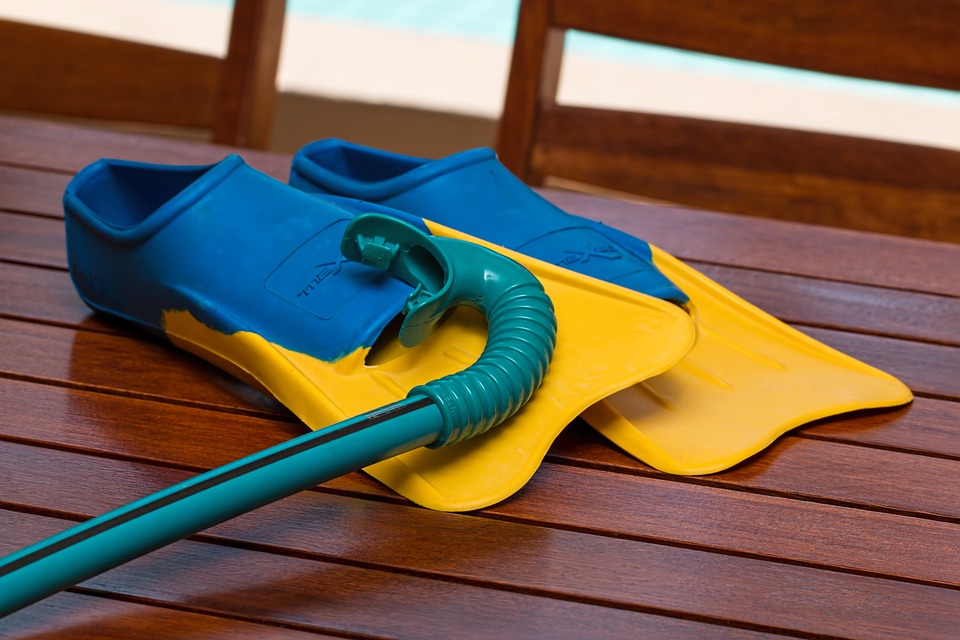Table of Contents
Snorkelling Gear Demystified: A Comprehensive Buying Guide
Introduction
Snorkelling is a fantastic way to explore the underwater world without the need for complicated scuba equipment.
However, having the right snorkelling gear is crucial to ensure safety, comfort, and an enjoyable experience.
This comprehensive buying guide will walk you through the essential equipment, explaining their features and how to choose
the best options for your snorkelling adventures.
Mask
The mask is arguably the most important piece of snorkelling gear. It provides a clear view of the underwater
environment while keeping water out of your eyes and nose.
When choosing a mask, consider the following:
- Fit: A proper fit is crucial for a good mask. Ensure it forms a seal against your face without any
leaks. Test the fit by placing the mask against your face without using the strap and inhaling slightly to check if
it stays in place. - Visibility: Opt for a mask with a wide field of vision to fully enjoy the underwater scenery. Look
for a low volume design that sits close to your face, reducing the amount of air required to clear water if it
enters. - Mask Frame: Masks come in two main options: framed and frameless. Framed masks are sturdier and
have a separate frame, while frameless masks offer a more lightweight and flexible design. - Strap and Buckles: Ensure the mask has a comfortable strap that is adjustable for a secure fit.
Quick-release buckles make it easier to put on and remove the mask.
Snorkel
The snorkel allows you to breathe while floating on the surface, extending your time underwater.
Consider the following when choosing a snorkel:
- Purge Valve: A snorkel with a purge valve allows for easy clearing of water. This valve aids in
blowing out any water that enters the snorkel, preventing you from inhaling it. - Flexible Tube: Opt for a snorkel with a flexible tube, which makes it easier to position and
reduces strain on your jaw. - Mouthpiece: Look for a comfortable mouthpiece made of hypoallergenic silicone. It should fit
snugly in your mouth without causing discomfort. - Splash Guard: A splash guard at the top of the snorkel prevents water from entering when waves or
splashes occur.
Fins
Fins enhance your swimming efficiency, allowing you to move through the water with less effort.
Consider the following when choosing fins:
- Size and Fit: Fins should fit comfortably without being too loose or snug. Ensure they provide a
secure fit without causing discomfort. - Design: There are two main types of fin designs: open heel and full foot. Open heel fins are
adjustable and require boots, providing better control and versatility. Full foot fins are more suitable for warm
water and don’t require additional footwear. - Material: Fins are typically made of rubber or plastic. Rubber fins are more durable and provide
better propulsion, while plastic fins tend to be more affordable. - Straps and Buckles: Look for adjustable straps and quick-release buckles to ensure a secure fit
and easy removal.
Wetsuit or Rash Guard
Depending on the water temperature and personal preference, you may need a wetsuit or rash guard to protect your body
from sunburn, jellyfish, and the cold.
Consider the following:
- Thickness: The thickness of the wetsuit depends on the water temperature. Thicker wetsuits provide
more insulation but may restrict movement. - Material: Neoprene is the most common material for wetsuits due to its insulation properties.
Rash guards, on the other hand, are typically made of lightweight and quick-drying fabrics. - Fit: A wetsuit or rash guard should fit snugly to trap a thin layer of water against the skin and
provide better insulation. Ensure it allows for comfortable movement without restrictions.
FAQs
What is the purpose of snorkelling gear?
Snorkelling gear allows you to explore the underwater world by providing visibility, breathing capabilities, and
efficient movement.
Can I use a diving mask for snorkelling?
While similar, snorkelling masks are designed specifically for surface swimming and have a larger field of vision
compared to diving masks, which are designed for diving deeper.
Do I need all the gear for snorkelling?
At a minimum, you need a mask, snorkel, and a pair of fins to fully enjoy snorkelling. Additional gear, such as a
wetsuit, may be necessary depending on the location and water conditions.
How often should I replace my snorkelling gear?
Snorkelling gear should be replaced when it shows signs of wear, such as cracks, tears, or loss of effectiveness. It is
recommended to replace masks and snorkels every 2-3 years, while fins can last longer with proper care.
Can I rent snorkelling gear?
Yes, many snorkelling destinations offer gear rentals. However, using your own gear ensures a better fit and
familiarity with the equipment, leading to a more enjoyable experience.





